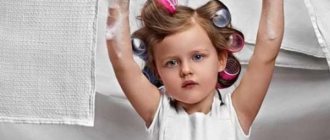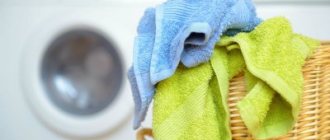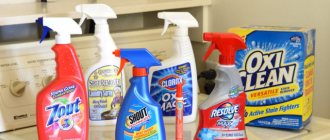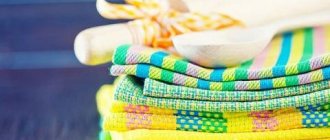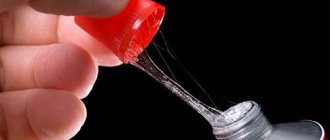Not everyone knows how to wash off blood that gets on clothes or furniture. And this is a serious problem, since this kind of pollution is sometimes difficult to remove, to put it mildly. But the editors of HomeMyHome suggest that perseverance and useful tips will help return things to their former appearance, and the bloody stain will disappear without a trace. So, let’s study the recommendations and hurry to take advantage of them!
How to remove an old blood stain from a sofa
To resuscitate a sofa or chair with old traces of blood:
- Rub a damp sponge with laundry soap and apply the resulting foam to the problem area from the edges to the middle. Rinse off the contaminated foam with water and dry the fabric. If necessary, repeat the procedure more than once.
- Dilute dish soap halfway with water. Apply foam to dirt, rub, rinse thoroughly and let the upholstery dry.
Have the stains come off? Try these options.
- Remove old blood using acetylsalicylic acid. Dissolve an aspirin tablet in water and apply the substance to the red marks with cotton wool. Wipe with a clean cloth.
- Pour a glass of water into two containers. Add 20 ml of ammonia to one, and a tablespoon of borax to the other. First treat the stain with an ammonia solution, then with a liquid containing borax. Soak any excess product on the upholstery with a clean piece of fabric, and then rinse with water.
We recommend reading: All about cleaning the oven at home
Precautionary measures
You should know certain precautions that will help preserve the appearance of things and not cause harm to them. If you follow these simple methods, it will be easier to clean blood stains.
It is highly discouraged to use high temperatures when washing, as they cause protein denaturation, that is, destruction. Thanks to this effect, the blood will only penetrate and eat into the fibers of the fabric more strongly. Subsequently, there is no way to remove such stains - at most yellow stains may remain in this place. You can completely get rid of blood stains only by washing them in low temperature water.
Do not subject clothing and bedding to other heat treatments. This applies to ironing and steaming. Once the fabric is exposed to high temperatures, the stain becomes impossible to remove because it is imprinted into the fibers of the fabric.
Fresh blood is perfectly absorbed into all tissues, and therefore you should not rub it. In this case, the area of the blood stain will only increase, which is not part of the plans of the person who is looking for ways to wash it off. Do not use brushes and napkins in an aggressive attempt to remove dirt. It is better to use a dry cloth, gently applying it to the stain so that it absorbs moisture.
How to remove old blood stains from a mattress
If you notice bloody spots on the mattress, try to return it to its former neat appearance with this remedy:
- Potato starch - tablespoon;
- Table salt - half as much;
- 3% hydrogen peroxide – 25 ml.
After mixing the components, get a paste-like mass, which must be applied to the stain and wait until it dries. Remove the product with a spoon. Apply wet and dry wipes to the treated area alternately until no traces remain on them.
How to dry suede shoes, removing rain stains
- If the stain is fresh and the water has not yet dried, apply several layers of dry paper towels (napkins) to it and press firmly. After soaking with moisture, move the dry part of the paper towels towards the wet spot on the shoe. Continue this process until the suede boots are completely dry.
- Remove any remaining stain using a nail file, using the fine-grained side.
- Lightly moisten the shoes with steam from a kettle or pan of boiling water (hold it 10 centimeters above the source of steam - be very careful, not a drop of water should form on the suede). Steam from a clothes steamer or iron can also be used. Steam the entire surface of the suede boots.
- After the shoes have been completely steamed, use dry towels to wipe the suede, removing moisture from it and restoring the original position of the fibers.
- Leave your suede shoes somewhere cool and dry and allow them to dry through natural evaporation. Do not place it in a hot place or try to dry it using other means, as this may damage the suede.
- After the shoes are completely dry, brush out the lint with a suede brush.
Removing old blood stains from carpets
The fleecy surface of carpets and rugs is already difficult to clean, and when complex stains form on it, for example, from blood, housewives panic. Calm down and get to cleaning.
It is better if the bloody marks were washed off immediately: it is easier to get rid of fresh contamination. But there is a remedy that allows you to cope even with old marks.
- Gently scrape the stain with a blunt object.
- Prepare a cold soap solution (one tablespoon of detergent per half liter of water).
- Moisten the problem area with the resulting liquid using a soft sponge.
- Mix 50 ml of water and a tablespoon of ammonia and treat the stain.
On a note! It is not always possible to remove old blood stains the first time. Repeat the procedure until the desired result.
Fabric Features
Suede is popular among fashionistas. Previously, only boots and sheepskin coats were made from it, but in modern boutiques you can find more delicate items: a dress, a jacket, a bag, gloves. The appearance of the products is chic, the material adds style. But special care is required for suede clothing to ensure it remains chic for a long time. The material has a fleecy surface, can be dyed and looks more natural compared to leather. Two types of suede are popular in textile production: natural and artificial. The main rule for fabric is minimal exposure to moisture. Therefore, the products should only be used in appropriate weather.
How to remove old blood stains from clothes
There are many ways to remove blood stains from clothes. Choose the one you like and start acting.
- Treat the problem area with a detergent (soap, stain remover, dishwashing gel). Rub lightly, then rinse the item. Mix 20 grams of salt in a liter of water. Dip the product into the resulting solution and leave overnight. Then rinse thoroughly.
- Hydrogen peroxide will combat stubborn stains. Thoroughly soak the fabric in the damaged area with the product and place it in a dark place. After 15 minutes, rub gently with a cotton pad. Rinse the product and let it dry.
Attention! Peroxide is a rather aggressive drug, and also has a bleaching property, so it is undesirable for colored fabrics. Good only for dense white matter.
- Add ammonia to the water (liter and 50 ml, respectively), immerse the item in the resulting liquid for an hour. Then rub the problem area and rinse the product.
Advice! Instead of ammonia, use window cleaner if it contains this ingredient. Be aware of the possible lightening of the fabric.
- A simple substance for removing blood stains from clothes is baking soda. Make a paste from it. Apply the mixture to the stain. When the product has dried, brush off the excess and wash the item.
- Prepare a thick paste of water and starch and apply to the contaminated surface. After the mixture has dried, rinse the product thoroughly. The method is suitable even for delicate fabrics.
- Glycerin will help get rid of blood stains. It is slightly heated in a microwave oven or in a water bath, and then the dirt is moistened by lightly rubbing. All that remains is to wash the product.
- Soak the contaminated area with white vinegar, and after a while, immerse it in cold water and wash.
We recommend reading: Cupronickel spoons will clean potato broth
How to clean dirt from suede shoes and remove scuffs
- If a large piece of dirt gets on your suede shoes, wait until it is completely dry and then use your hands to pry it off.
- Using a suede brush, an old toothbrush, a nail file, or a clean terry towel, gently brush any dried dirt off your suede shoes. Move first against the pile, and then in its direction. At the same time, do not rush or use force - otherwise you may push dirt particles even deeper into the fibers. Repeat this procedure, first against and then in the direction of the pile until dried dirt stops falling out.
- After removing the dirt, remove the abrasions and comb the tangled pile in the desired direction with vigorous brush movements against the direction of the pile, using moderate pressure on the material. If the lint doesn't lift in some areas, use a non-sharp, stiff edge of a spatula or credit card to comb it in the right direction. Use only the minimum amount of pressure necessary.
- If the suede pile still does not rise, lightly moisten it with steam from a kettle or pan of boiling water (hold the shoes 10 centimeters above the source of steam - be very careful, not a drop of water should form on the suede). Steam from a clothes steamer or iron can also be used. Steam the entire surface of the suede boots.
- After the shoes have been completely steamed, use dry towels to wipe the suede, removing moisture from it and restoring the original position of the fibers.
- Leave your suede shoes somewhere cool and dry and allow them to dry through natural evaporation. Do not place it in a hot place or try to dry it using other means, as this may damage the suede.
- After the shoes are completely dry, brush out the lint with a suede brush.
- After completing all the previous steps, use a school eraser or an art eraser to erase the remaining stains from the surface of the suede.
- If the previous steps are ineffective, wipe the suede shoes with a soft cloth using a small amount of vinegar or lighter fluid, then blot dry with a clean cloth. Let the shoes dry and then brush the lint again.
Household products won’t let you down either
Before purchasing stain removers, chlorine bleaches, or oxygen bleaches to combat blood on items, check the label. Find information that the product can handle complex stains, including blood stains. The composition of such a drug must contain ammonia.
Now you know that blood stains, although they are classified as difficult, can still be washed off. To return carpets, upholstered furniture and clothing to their original appearance, choose one or more methods and do not forget about the general recommendations given at the beginning.
Ready-made chemicals: tips and reviews from forums
Do not mix stain removers with chlorine (Chlorine, Chlorum or Cl is written on the product composition) and ammonia based (Ammonia, Ammonia, Liquor Ammonii caustici, NH3 are written on the packaging). A mixture of chlorine and ammonia releases toxic fumes.
- Stain remover "Eared Nanny". Suitable for children's things. If soaked for a long time, it can damage the paint of the fabric (link to review: lnnk.in/ipb):
2. Amway spray plus washing at 70℃ (link to review: lnnk.in/ipb):
3. Udalix pencil (link to review: lnnk.in/ipb and lnnk.in/irb):
4. Oxygen bleach-stain remover OZONE Thermo TM Dakos (link to review: lnnk.in/ipb):
5. Stain remover Dr. Beckmann for blood and protein stains, 50 ml (review link: lnnk.in/itb):

